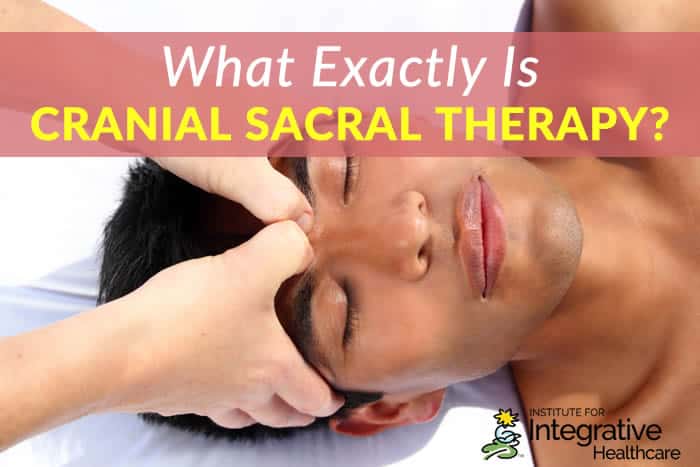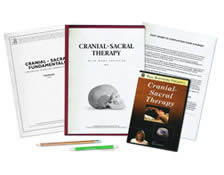

Some Background on Cranial Sacral Therapy
Osteopath Dr. William Sutherland developed the modality we call Cranial Sacral Therapy (CST) in the 1930s when he realized that there is a small degree of motion allowed by the beveled cranial sutures, allowing them to move or “breathe,” pulsing with the body. This motion occurs in relationship to the tissues and cerebrospinal fluid in the central nervous system, the membranes surrounding the central nervous system and the sacrum.
The Craniosacral System
The craniosacral system includes the structures of the central nervous system including the skull, the cranial sutures, the cerebrospinal fluid, membranes of the brain and the vertebrae, spinal cord and the sacrum.
The craniosacral system is connected with the musculoskeletal system through the vascular system as well as the sympathetic and parasympathetic nervous systems.
Trauma anywhere in the body may impact the craniosacral system, restricting normal movement and inhibiting the pulse of the fluids. It is believed that the normal rhythm can be interrupted by all kinds of trauma, including:
- during birth
- childhood injuries
- repetitive motion injuries
- car accidents
- falling accidents
- injuries
- and even from stressful events.
CST uses a series of gentle techniques to remove blocks and restore this subtle movement, or pulse, in the central nervous system. CST uses gentle digital pressure and does not involve the manipulation or chiropractic “adjustment” of the skeletal system. The pressure used in CST is very light, about 5 grams of pressure or less – about the weight of a nickel.
A Cranial Sacral Session
During a cranial sacral session, the therapist may move the limbs and ribcage; check the hips and shoulders; and feel the cranium, spine and sacrum to determine where restrictions may be found.
A key element of performing cranial sacral is the ability to feel the subtle rhythms, or lack thereof, in the central nervous system as well as the pulses in the body. Therapists must be able to identify the characteristics of the cranial rhythmic pulse: the rate, symmetry (side to side), amplitude or “energy” of the pulse. Evaluation of the pulses of the body can be done in the feet, thighs, ASIS joint, sacrum, diaphragm, shoulders and head.
In addition to the evaluation of the pulses of the body, another aspect of evaluation in CST is that of the three major diaphragms:
- the thoracic inlet at the top of the thorax (between C7 and sternoclavicular joints)
- the respiratory diaphragm (between T12 and L1, L2 and L3)
- and the pelvic diaphragm (lower lumbar spine and anterior contact just superior to pubic bones).
These evaluations allow the therapist to identify where restrictions are located in the body. They will then utilize a series of techniques to release them, restoring movement. CST therapists may use gentle fascial traction (holds), “unwinding” techniques, compression and decompression, lifts and still point induction to release restrictions.
Anatomy of the Central Nervous System
It is also critical to CST that the therapist is familiar with the anatomy of the central nervous system. They must be able to identify the cranial bones (frontal, parietal, occipital, ethmoid, sphenoid and temporal bones), vertebrae and sacrum.
It is also important to be able to identify and locate the cranial sutures: the squamosal, lambdoidal, coronal, sphenofrontal, sagittal, sphenotemporal and occipitomastoid sutures of the cranium.
Also important is familiarity with the meninges (dura mater, arachnoid and pia mater), and the locations of the dural attachments: the foramen magnum, C2, C3, and the sacral canal.
13 Benefits of Cranial Sacral Therapy
Cranial sacral therapy has been shown to be effective in:
- treating headache and migraine
- chronic pain conditions
- chronic fatigue syndrome
- post-traumatic stress disorder (PTSD)
- post-surgery pain
- temporomandibular joint pain (TMJ)
- hip and neck pain
- sinus conditions and pressure
- earaches
- irritable bowel syndrome (IBS) in adults
- colic in children
- anxiety and depression in adults
- as well as hyperactivity in children.
A Typical CST Session
A CST session varies client-to-client as the therapist responds to what is happening in the body, but there are several elements that are common to a session:
Typically, a session begins with the evaluation of the three major diaphragms, then progresses to the release of restrictions throughout the body, especially the neck and sacrum.
- The therapist may begin by assessing the upper thorax, holding the left hand on the neck with the right on the sternum using a light pressure, feeling the micro-movements happening as the client breathes to determine if there are restrictions in one or both sides of the body.
- Next the therapist may move to the ribcage to assess the respiratory diaphragm, gently pulling from the opposite side with the intension of mobilizing the ribs. A hold on the diaphragm to release the solar plexus may be needed. Once the ribcage is mobile, the therapist may return to the shoulders, opening the shoulders with gentle pressure on one or both sides of the body.
- A gentle hold with one hand on the sacrum under the body and the other on the lower abdomen allows the therapist to assess the lower diaphragm. If restriction is detected in this diaphragm, light traction on the iliac bones and/or sacrum may be applied to release the restriction.
- Holding the feet to evaluate the pulse in each foot to determine if they are even, the therapist may apply gentle traction to the legs to reduce restrictions, freeing up the circulation in the legs and feet.
- The therapist will move to the head to do gentle work to release the sutures of the cranium. Pulling the ears releases pressure at the frontal bones, light pressure on the temples release the sphenoid, light thumb pressure on the face alongside the nose reduces sinus pressure while palm compression to the mandible reduces TMJ pain, and light thumb pressure on the cranial sutures allows them to release. Tension in the neck can be relieved by applying gentle traction and unwinding the the head, neck and shoulders. Still point induction at the occiput may release both the neck and sacrum.
- A session usually ends with a hold of the neck and sacrum.
This modality is extremely relaxing, partly because it is very gentle and pressure is extremely light, and also partly because it impacts the nervous system so powerfully.
Contraindications
While the pressure used in cranial sacral therapy is very light and the modality is extremely gentle, there are still some contraindications. Any recent brain injury such as brain hemorrhage, aneurysm, stroke, concussion or trauma contraindicates CST. Recent spinal taps (such as for pain during childbirth) or recent fracture of the skull, vertebrae or ribs contraindicate CST until they are fully healed.
Studies have shown that cranial sacral therapy is very effective in treating several chronic pain conditions including chronic fatigue syndrome, neck pain, headache and migraine. In one study using CST to treat pain in the neck, pain reduction was significant (50%) in the group receiving treatment.
Conclusion
There are some questions about the validity of CST, however, and more research needs to be conducted to understand exactly why and how it works. Many question the origin and validity of the “pulse” of cranial sacral fluid central to the theory of CST, arguing either that it is not measurable or that the pulse felt is that of the therapist.
Anatomists argue that the cranial bones are fused in adults, and therefore have no mobility. Even though there are skeptics as to the validity of CST, the modality has shown consistent result in reducing pain, anxiety and stress in a variety of conditions.
Cranial sacral therapy is a gentle but powerful modality that has proven beneficial for a variety of conditions. While gentle, this modality requires advanced training as it involves very specific application of very gentle techniques which, when applied correctly, can produce very significant results.












